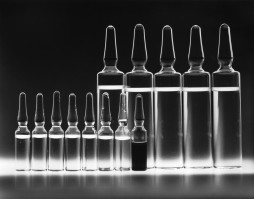
Approximately half of all chemotherapy drugs used to treat cancer are platinum-based.
They act against tumour cells, but they also do damage healthy body cells.
This is what causes the dreaded side effects such as nausea, hair loss, liver and kidney damage.
Johannes Karges applies double selectivity in his research: The cell-damaging active substances are packaged in nanoparticles that are not harmful to the body.
Moreover, they’re marked in such a way that they accumulate primarily in tumour cells.
“They dock onto a specific receptor that is found to be overexpressed in cancer cells,” explains Karges.
And they only develop their cell-damaging effect once they’ve been activated.
The researchers use light for this purpose.
“Ideally, it will no longer be necessary to perform surgery to treat a tumour,” as Johannes Karges outlines his vision.
“We’ll administer the drug into the patient’s vein, wait until it has accumulated in the tumour and then position the patient under a red light lamp that specifically activates the compound and triggers the therapeutic effect.”
The researchers successfully demonstrated this therapeutic concept in breast cancer cells and in mouse models with a breast cancer tumour.
Thanks to the double selectivity of the newly developed active substances, none of the typical side effects were observed in the animal model.
The breast cancer tumour, however, was selectively removed in a single treatment.
Source: Ruhr-University Bochum
We are an independent charity and are not backed by a large company or society. We raise every penny ourselves to improve the standards of cancer care through education. You can help us continue our work to address inequalities in cancer care by making a donation.
Any donation, however small, contributes directly towards the costs of creating and sharing free oncology education.
Together we can get better outcomes for patients by tackling global inequalities in access to the results of cancer research.
Thank you for your support.